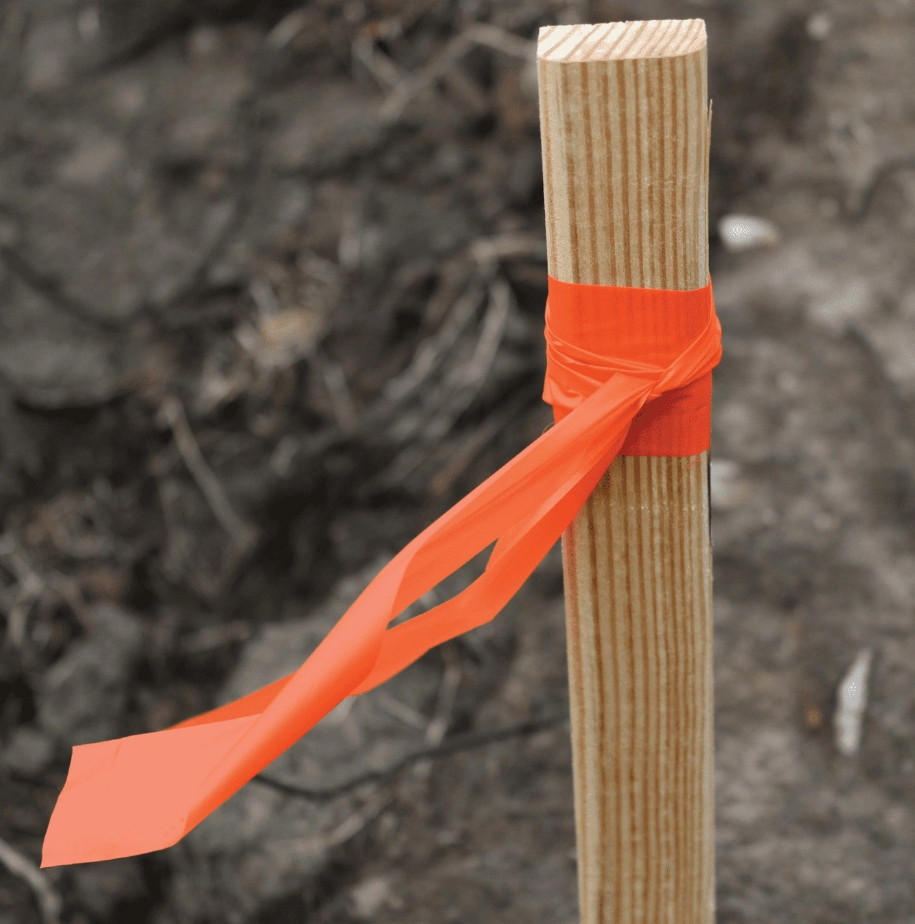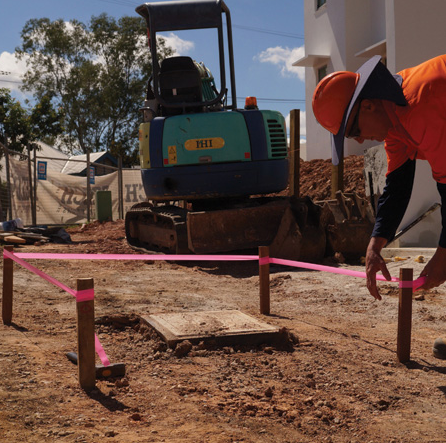
Written By Kai Escobar
When you think of surveying, oftentimes equipment such as total stations and GNSS receivers will come to mind. But an important part of surveying that is important to be familiar with is the marking and taping of the land before the use of the big survey equipment is brought out. The first thing most surveyors should do when working on a construction site is to set up some sort of temporary boundary around the site to deter onlookers from wandering around, especially since the site could have potential hazards. After that, it’s time for the flagging to come out.
What is the purpose of flagging?
Marking/flagging a survey area is extremely important as it indicates which parts of a property are safe to work on and if a certain area has any type of hazard then it is important to distinguish what exactly it is. The types of things that may be underground which are important to mark are things such as electrical cables/power lines, water, sewer lines, and gaseous materials.

Since these potential hazards are mainly found underground, you may be wondering how you will be safely able to find them. One of the most common and useful tools that you will need is a magnetic locator. There are different settings on a magnetic locator so that you can specifically look for metal items that are either closer to the surface or deeper underground.
It is also important to know that moving or tampering with the markings/flagging is both highly dangerous and illegal. This is another important reason to set up some sort of temporary boundary around the job site so that there is no doubt to any passersby that it is an active jobsite. For bigger sites with more hazards you may want to consider setting up a fence to prevent people from both looking in or walking around the site. Even the owner of the land is not permitted to tamper with the markings, only those who are working on the site can set or move them.
What do each of the colors mean?
After you have checked over the job site and have identified an area that has some buried utility, you need to make sure that you use the right color for your flagging to communicate to everyone what exactly is there. According to the American Public Works Association (APWA), this is the guide to what each color signifies.

White: Proposed excavation routes and limits
Pink: Temporary survey markings
Red: Electrical power lines, cables, conduit, and lighting cables
Yellow: Gas, oil, steam, petroleum, or gaseous materials
Orange: Telecommunications, alarm or signal lines, cable TV
Blue: Potable water
Purple: Reclaimed water, irrigation, and slurry lines
Green: Sewer and drain lines
To properly utilize flagging tape, you will need to make sure that you get the right tape and that you get some necessary supplies to go along with it. One important companion to marking tape is wooden stakes. As you can see in the pictures from the previous pages, the stakes are important as the flagging tape needs to be tied around it making it easily visible to everyone. You can either use a singular stake or use the flagging tape to connect multiple stakes so that it can encompass a piece of land.
An important thing to look out for when purchasing and using flagging tape is its brightness so that it will be clearly visible. You should also take into account how long you are going to leave the tape outside so that in the event it gets damaged or discolored, you have enough to replace it.
As long as you adhere to the APWA’s guidelines to marking tape colors, get the necessary accompanying tools, and you ensure that the tape is both visible and bright then you are set and ready to start marking your jobsite.
To learn more and to purchase your flagging click the link below.

Good info about flagging